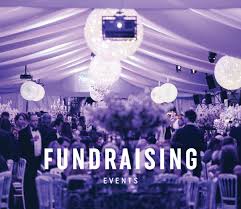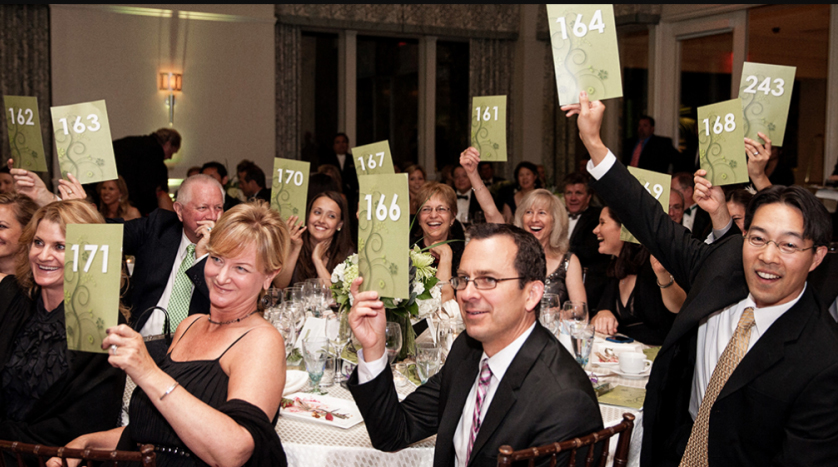 NOTE: This post is specifically directed to Directors of Development who manage major gifts, events and prospects, and to MGOs who have donors that attend events. At Veritus Group we don’t advocate cultivating major donors with events and asking MGOs to work at events. But if you have events, there is a right way to follow up correctly. Below is how I suggest you do it.
NOTE: This post is specifically directed to Directors of Development who manage major gifts, events and prospects, and to MGOs who have donors that attend events. At Veritus Group we don’t advocate cultivating major donors with events and asking MGOs to work at events. But if you have events, there is a right way to follow up correctly. Below is how I suggest you do it.
Fall is a huge event time for many non-profits. Along with spring, these upcoming months are the unfortunate time of year that galas, auctions, and outdoor fundraisers are all taking place.
I say “unfortunate” because traditionally, these events seem to suck the life out of the major gift staff, and their caseloads lie dormant for 30-60 days. Richard and I hope this is not happening to you.
If you are going to do events, please don’t allow your major gifts staff to plan, organize and staff these events. Let another team do it with volunteers. (Tweet it!) Richard and I only allow our MGOs at events to cultivate and steward relationships with their donors and make connections for them with other donors.
One thing that is absolutely critical, however, is how you follow up on these events. There are four specific audiences that need follow up: Regular donors, Prospective-regular donors, Major Donors and Major Prospects.
Regular Donors/Prospects
For regular donors and the prospects who are attending, the general development team can handle the follow up. Note that it’s extremely difficult to get a prospect to turn into a “mission” donor that attends events. Many of these prospects are coming because a donor invited them. A key will be to connect the prospect with the donor if possible.
Here are suggestions for how to handle this situation:
- Within 48 hours, send a thank you letter to all of these attendees (donors and prospects). If a gift was given, make sure you have that information in the thank you letter and how it was designated.
- For mid-level donors, you should follow up the letter with a thank you call.
- For regular prospects, you should send your “welcome package” you send to all new donors, giving them more information about your mission. This includes a cover letter reminding them of the event they attended; it also includes an opportunity for the donor/prospect to give another gift.
- They should then be put into your regular mail stream of communication.
Major Donors/Prospects for Major Gifts
With this group, try these ideas:
- An MGO will know who on your caseload will be attending AND if they are inviting friends who are potential prospects. These prospects will need to be handled by either the CEO or Development Director – or if you are fortunate enough to have one, someone who works exclusively with prospects. MGOs need to stick to their caseloads! Since you have a good relationship with your donors, the key will be to get them to strategize with your team on how best to approach those prospects while you are at the event. Secondly, you will want to obtain all the contact information you can prior to the event, so you know exactly what donors on your caseload are connected to which prospects. Very important.
- Prior to the event, have your personal note envelopes already hand-addressed for your donors and the prospects they are inviting.
- The best practice I’ve ever witnessed from an MGO after an event was the MGO who wrote out her thank you notes immediately after the event, getting them into the mail early the next morning. This impressed her donors to no end. In the note, she mentioned something specific about the contact she had with that donor or prospect that night. Yes, she was up until 2am doing those notes, but the impact it made on her caseload was amazing. Remember, surprising a donor with great customer service will endear you to that donor.
- Send photos. At the event, you should be taking photos of your donors and their guests. Either at the event itself or that evening, send those photos via text or e-mail to remind them of the great evening. Your donors or prospects will not be expecting them.
- Within 48 hours, call all of your donors who attended the event, thank them, and get their impressions of the event. Soliciting their feedback will be appreciated, and asking them how their guests liked the event or what conversations were had will help your team know how to approach those prospects they brought to the event. This is where you can also follow up on any pledge that the donor made, and start the conversation on how the donor wants to fulfill that pledge.
- Within 48 hours, have your team send an introductory letter to the major gift prospects, giving them more information about your mission, the connection they have to one of your caseload donors, and telling them that someone from the team will be reaching out to them see if they would like to schedule a meeting to learn more about the organization. If they made a gift at the event, you will obviously want to acknowledge that gift and discuss how it will be used.
The key is timing. You cannot wait a week to follow up after an event. Your follow up has to be done within 24-48 hours. Events, if done right, are filled with emotion around your mission. Your major gift donors and prospects will carry that emotion with them once they leave, but you have very little time to take the emotion of that event and connect with them in a way that deepens your relationship.
I know you will be exhausted, and there will be a tendency from both you and the entire development team to take it easy for a day or two following the event. You just can’t do it. The real magic of events for you happens AFTER the event. Plan for that.
Remember, most nonprofits fail miserably at follow up. You will stand out if you follow the suggestions above. Your donors and prospects will be surprised, and it will lead to good things down the road.
Jeff
PS — For more on this subject, check out our free White Paper, “Events and Major Gift Fundraising.”
This post was originally published on May 13, 2015.




0 Comments